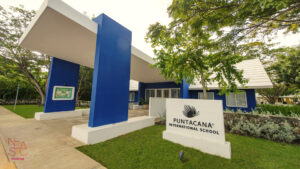Public and Private Schools of the Dominican Republic
Public Schools
The Dominican Republic provides free public education to all children up to 14 years of age, including the children of expats. However, to continue receiving state-funded free education in secondary school beyond the age of 14, citizenship is mandatory. There is a high dropout rate after students complete their basic primary education, and the government, along with some NGOs, has been making efforts to reduce this number.
The academic year consists of two terms divided by a Christmas break. Summer holidays consist of eight weeks from mid-June to mid-August. In most public schools, the day begins at 7.30 am or 8 am and ends at about 2 pm. Some schools are open from 12 pm to 6 pm. Attending half a day of school has been the custom in the Dominican Republic, but some full-day schools have opened recently, for example in the Puerto Plata province.
Students are required to wear uniforms in both public and private schools in the Dominican Republic, and this additional expense is one of the factors responsible for the number of dropouts. Primary schools generally instruct students in academic learning, with very little emphasis on practical learning. Secondary schools provide more options, such as vocational courses. Some public schools, especially those in the capital city of Santo Domingo, teach the curricula in Spanish as well as in foreign languages.
Private Schools
Private schools in the Dominican Republic teach in English and enroll students from different parts of the world. The fees at private schools vary, and there may be additional expenses such as uniforms, textbooks and lunches. Private education has been in existence for decades in the Dominican Republic, and an increasing number of students are enrolled in these schools. The majority of schools in Santo Domingo are private, and more than half of all primary education students are enrolled in them. The spurt of growth in private education is partly due to the poor standards of the public education system in the country. Students must show some proficiency in English before they can be admitted into most private schools.
The Dominican Republic also has some religious private schools, such as Catholic schools, which are partially state-funded.
The government offers scholarships to high achievers in order to enable them to enroll in a private school of their choice. Like public schools, private schools must adhere to the national curriculum and follow the academic schedule established by the government. National examinations are held at the end of primary and secondary education.
Public, private, and international schools in the Dominican Republic follow the US-based A-to-F grading system.
International Schools
There are plenty of international schools in the Dominican Republic, and these schools have the freedom to either follow their own academic schedule or follow international curricula. International schools can expand their curriculum beyond the basic material, and they also have the flexibility to alter the academic year as long as the curriculum is completed. International schools are usually the preferred option for expats. These schools are located in various cities in the Dominican Republic.
The Colegio Adventista, is a Spanish-speaking institution located in Bonao, in the Monseñor Nouel province. Instruction in French and English is also provided here.
The Doulos Discovery School in Jarabacoa is a Christian school catering to students from kindergarten to grade 12. It provides instruction in English and Spanish and prepares students to enroll in local universities, as well as those in the United States.
The city of La Romano is home to the Abraham Lincoln School, which was founded to educate the children of American employees of the Central Romana Corporation. Today, it is open to other children and offers education in English and Spanish.
French expats who intend for their children to follow the French curriculum can send their children to the Ecole Francaise las Terrenas, a bilingual school in Las Terrenas. Another French school is the Ecole Francaise de la Costa Verde in Rio San Juan, which provides education from the primary level to the baccalaureate level.
The Santiago Christian School in Santiago is a US-accredited school, enrolling students from pre-school to grade 12.
The capital city of Santo Domingo has a varied choice of international schools, such as the American School of Santo Domingo, which offers the US curriculum; the Saint George School, which offers the International Baccalaureate program; and St. Michael’s School, a college preparatory school based on the US system.
In the resort town of Sosúa in the Puerto Plata province, expats can choose between the International School of Sosúa, which is a co-educational day school that caters to students from pre-kindergarten to grade 12, and the Garden Kids International School, a bilingual institution catering to the local and international families living in the country.
Source: Focus Expats
Category: DR Living |
